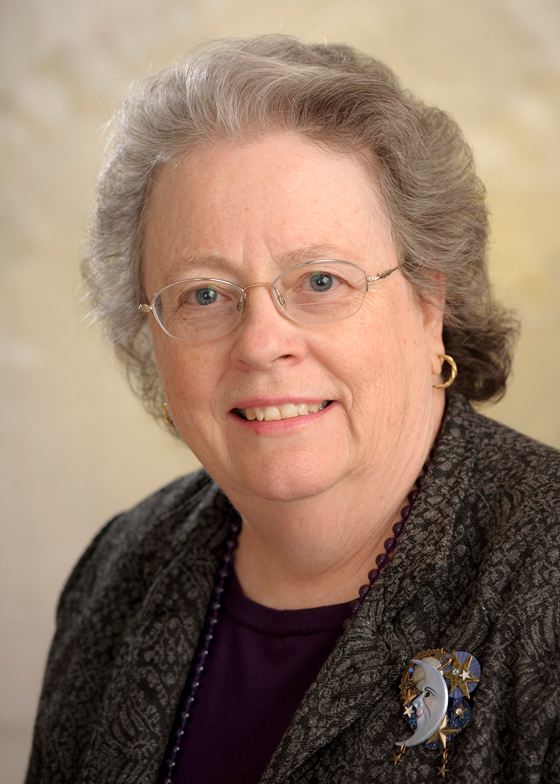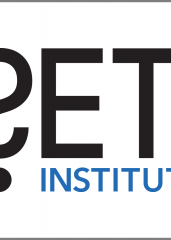The night sky of the Eastern Sierra foothills nurtured young Edna Turner’s love of astronomy with inspiring views of stars, planets and galaxies. She rocketed into the space science education realm and set the standard for achievement and excellence.
The night sky of the Eastern Sierra foothills nurtured young Edna Turner’s love of astronomy with inspiring views of stars, planets and galaxies.

Edna DeVore Full size image
As a member of a cattle ranching family, she raised and showed Hereford cattle in 4-H, sending her on a leadership trajectory. She made time to learn to play piano and guitar, and to excel in academics, graduating high school at age 16. Edna went on to graduate from Raymond College at University of the Pacific, a liberal arts and sciences college with an interdisciplinary curriculum, well before that academic approach became fashionable.
While working in Berkeley, CA as lab tech, Edna met Charles (Chuck) DeVore. They married in 1970, and toured Europe on their honeymoon. Returning stateside, her astronomy education and planetarium programming career was launched at Sierra Community College District, as the Planetarium Assistant. While serving the East Side Union High School District in San Jose, CA as Planetarium Director and as an award-winning science teacher, Edna completed her MA in Instructional Technology at San Jose State. She forged relationships in the space science education community while she was the Associate Director of Astronomy & Physics Education at Lawrence Hall of Science (LHS). During her tenure at LHS, she completed her MS in Astronomy at University of Arizona as an NSF Fellowship student, building her expertise and reach in the community.
Arriving at the SETI Institute in 1992, Edna was one of the first Principle Investigators (PI) to propose to the (then) NASA Office of Space Science and receive education program funding. With this funding, she launched and managed the Flight Opportunities for Science Teacher EnRichment (FOSTER) program on the Kuiper Airborne Observatory (KAO) for three years. FOSTER provided professional development, time to interact with scientists, and a KAO science flight experience for science teachers. At the cutting edge for the time, teachers were provided with an email account, and a downlink connection from KAO “Live from the Stratosphere” was broadcast at the Exploratorium in San Francisco.
Edna led the completion of The SETI Institute’s National Science Foundation (NSF) funded interdisciplinary curriculum supplements for grades 3 - 8, Life in The Universe (LITU) series. The content was presented in the context of searching for life, from planetary evolution and evolution of life, through microbiology studies and SETI. Connections were made with educators in Australia where Edna delivered a series of LITU workshops for teachers. The SETI Institute’s Australian connection expanded with the Australian-American Fulbright Symposium for science teachers held in tandem with the 2002 IAU Bioastronomy Conference on Hamilton Island, Australia. Science teachers were again interacting with scientists and attending interdisciplinary education workshops. The relationship has strengthened over time as SETI Institute education staff have continued to partner with Australian educators.
Over time, Edna’s astronomy and space science education efforts were funded by a successful proposal writing and award of a collection of NASA ROSES and NASA Hubble Education and Public Outreach (EPO) grants. Following the success of high caliber programs and products, NASA PIs and managers sought out Edna and the SETI Institute as EPO Co-Investigators (Co-Is) on large NASA programs including NASA Stratospheric Observatory for Infrared Astronomy (SOFIA) and NASA Kepler Mission. The SOFIA EPO program included the Airborne Astronomy Ambassador program, FOSTER program’s legacy, as well as robust science outreach, public outreach, and Active Astronomy lessons, kits, and educator workshops. NASA’s Kepler EPO program spanned hands-on, inquiry-based space science curriculum development, StarDate segments, educator workshops, NASA Kepler lithographs and posters, science outreach, public outreach, and tabletop models with light detectors demonstrating the transit method of detecting extrasolar planets. Edna was able to leverage partnerships with the Astronomical Society of the Pacific(ASP) and LHS to strengthen the SOFIA and Kepler EPO programs respectively. Collaboration within NASA Science Education Forums led to the popular NASA EM Spectrum poster. In tribute to her NASA EPO expertise, she was invited to travel with a small NASA contingent to Morocco to share best practices in formal and informal space science education. Constant across her programs and projects was the provision of time for conversations between teachers and scientists. Edna always treated teachers as professionals, which added value to the programs.
Edna served as NASA SOFIA’s EPO PI and Co-Director; as the Co-Investigator (Co-I) for another Interdisciplinary curriculum, Voyages Through Time (VTT), the SETI Institute’s second NSF funded curriculum development project; as Co- I for SETI Institute’s NASA Astrobiology Institute team; as Co-I for the NASA Kepler EPO; as Co-I for the SETI Institute’s Research Experience for Undergraduates; and as PI for Reaching for The Stars: NASA Science for Girls. VTT, an inquiry-based high school interdisciplinary curriculum, was comprised of six modules, Cosmic Evolution, Planetary Evolution, Origin and Evolution of Life, Hominid Evolution, and Evolution of Technology, and was described as astrobiology for high school students. Throughout the VTT development process Edna contributed to the subject matter and science pedagogy, as well as providing precise editing skills.
The SETI Institute began a partnership with Girls Scouts of Northern California (GS NorCal) to host the Astrobiology Adventure workshops for Junior Scouts, funded by a generous donor. This venture led to the Girls Go to Mars patch program, a NASA MAVEN sub-award, again in partnership with GS NorCal. Reaching for The Stars: NASA Science for Girl Scouts was Edna’s last NASA award. By assembling a team that included long-time colleagues at ASP, University of Arizona, NASA Goddard and GS NorCal with new partner, Girl Scouts of the USA, she seized the moment to secure funding for space science badge development, astronomy camps and total eclipse of the sun materials and activities for Girl Scouts.
Over the course of her career, Edna delivered over 250 workshops, gave hundreds of talks, and staffed exhibits for countless hours. She held a significant role in several Astrobiology Summer Science Experience for Teachers (ASSET), institutes held in partnership with San Francisco State University, and secured supplemental funding for Voyages Through Time development and the Girl Scout project. As lead author or co-author, she wrote nearly one hundred abstracts, papers, or articles. Edna always supported and encouraged the personal growth of her SETI Institute staff, partners and collaborators. Edna remains a friend and mentor to many members of the science education community around the world. Her leadership at the SETI Institute was recognized with her appointment as Director of Education and Outreach, and as Deputy CEO. With those appointments came responsibilities that she faced with grace. Twice she was called upon to serve as Interim CEO, and twice she stepped up to the lead the SETI Institute through a difficult situation. Edna shared her expertise, her management wisdom, and her laugh with all around her.
NASA called upon Edna to serve on the NASA Advisory Council Astrophysics Subcommittee, and she has earned respect and admiration at NASA HQ. Her leadership and service to the community further includes serving as Chair of the Local Organizing Committee, AbSciCon 2008; Board of Directors for the Astronomical Society of the Pacific; member of Education Board for the Foundation for Microbiology; Astronomy Education Board of the American Astronomical Society; and advisory boards for NASA and NSF EPO projects.
Some of the honors and recognitions Edna has received over her career include: AAAS Fellow 2018; SETI Institute Fellow 2017; Silicon Valley Women of Influence 2015; Aerospace Awareness Award, Women in Aerospace 2005; NASA Honor Awards for Kepler Awareness and EPO 2011, and for SOFIA Outreach 2012; NASA Ames Research Center, Contract Employee 1995; Outstanding Student Researcher, School of Education, San Jose State University 1989; U.S. Department of Education, Christa McAuliffe Teaching Fellow for California 1987-88; and Fellow, International Planetarium Society, 1986.
From a childhood that gave her a sense of wonder, early leadership training, and a big dose of cattle rancher’s grit and tenacity, Edna rocketed into the space science education realm and set the standard for achievement and excellence. Throughout her career, Edna has touched the lives of countless students, young adults, educators and colleagues, inspiring and equipping them to achieve. Science education program directors and managers, a US Marine Corps veteran, tech leaders, and award winning science teachers are among her protégés. In retirement, Edna leaves science education colleagues in place to carry on and to meet that standard of excellence.






